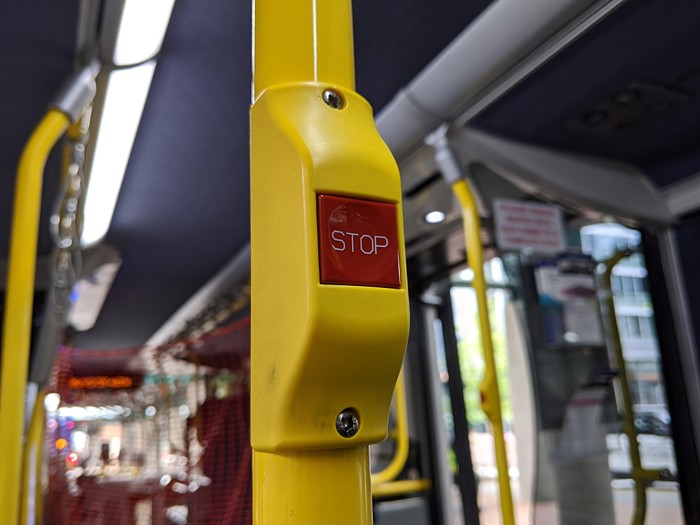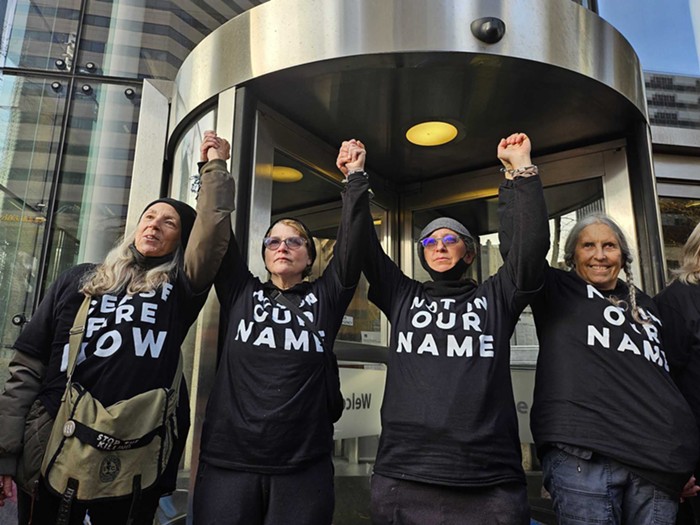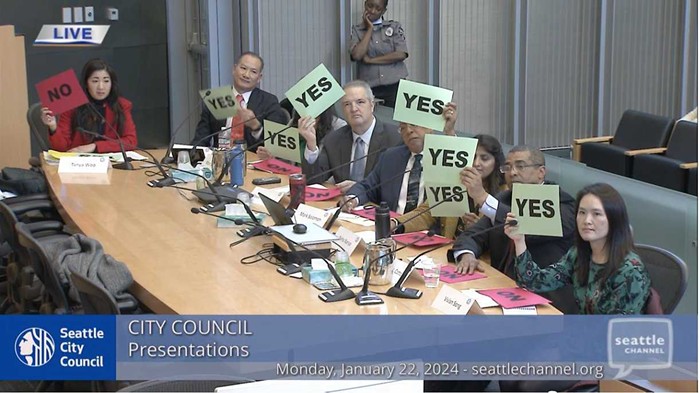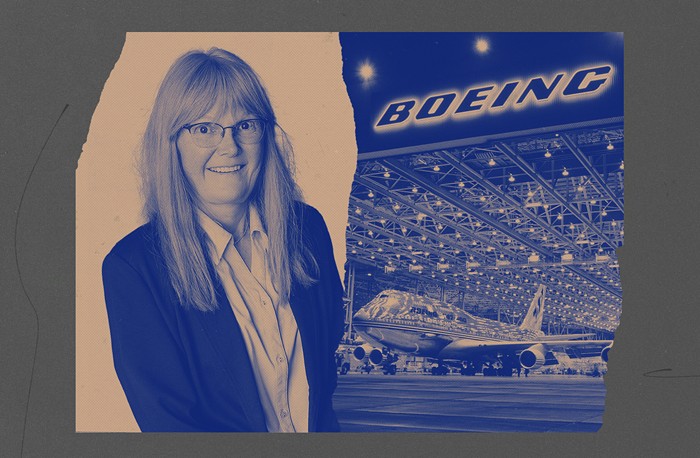In defiance of all who dismiss it as mere gloss, Seattle magazine is a notable success in a field where success stories, even prolonged periods of solvency, are a rarity. Owned by Minneapolis-based Tiger Oak Publications--whose other titles include Northwest Home & Garden, Northwest Meetings & Events, Seattle Bride, Minnesota Bride, and Minnesota Meetings & Events--Seattle just published its biggest, glossiest issue ever in September. Astonished by the success of a local magazine that no one I know reads or will admit to reading, I decided to investigate.
"Seattle magazine is targeted to a young, urban, affluent Seattle metro resident. Primary age range: 30s-50s. 65% female, 35% male. They live in Seattle, the surrounding city neighborhoods and suburbs. They are into cooking, dining out, the restaurant scene, their homes and elders..."
That's Seattle's mission statement--the description the magazine uses to introduce itself to potential advertisers. It reads a lot like a personal ad, which is fitting. As with personal ads, Seattle's mission statement is as much a wish list as an inventory. For a better portrait of a magazine, however, one should look to its editorial content and its ads.
Judging from the ads placed in Seattle over the last 12 months, the magazine's primary audience consists of well-to-do thirty-to-fifty-somethings. The ideal Seattle reader boasts significant resources--not filthy-richness, just a level of wealth that puts college savings plans, platinum eternity bands, "age management," vascular surgery, and quality assisted-living care for beloved elders within reach. But the one defining trait shared by all Seattle readers would seem to be hideous teeth. How else to explain the enormous number of appeals in each and every issue from dentists--cosmetic dentists, aesthetic dentists, restorative dentists--in all their many guises?
But the most revealing ads in Seattle, besting even the massed dentists, are the realtors, whose ads are gathered together into a small special section inside each month's issue. In both placement (ads are set toward the back) and presentation (the ads feature smiling come-on-call-me photos), Seattle's realtor ads mirror other papers' escort ads. (Ahem.) They say that for the older and richer, talk about real estate replaces talk about sex, and that adage would seem to be confirmed by Seattle's smiling horde of real estate pimps. It wasn't hard to imagine that "First Class Woodinville Duo" Greg and Sunny Butler's website might list their price for a no-anal, tag-team in-call alongside their current home and condo listings.
I'm being childish, I realize, but if any magazine ever made me feel like a bratty outsider, it's Seattle. It's not that I don't see myself or my peers in it--we're there, from the artists and writers in the bylines (photographer Annie Marie Musselman, whose work appears frequently in our pages, has gotten particularly glorious exposure in Seattle) to the "service-oriented hipster clerks" staffing the boutiques that have "changed the shopping climate in Seattle!" The renting classes are strictly cogs and clerks, valuable primarily for their help in propping up the small, exclusive world Seattle calls home--a place where "summer means sangria!" and editors write sentences like, "The relationship you have with your hairdresser can be one of the most complex in your life" without having to commit suicide immediately after.
Friends and Lists I guess that brings us to Seattle's editorial content. More than anything, Seattle is a magazine that wants to be your friend--if you are a wealthy, shop-happy, house-hunting Seattleite with rotting teeth, that is. For you, Seattle is attentive, supportive, and always telling you what you want to hear. It's just for you that Seattle magazine has crafted its whimsical approach to urban life, an approach that seems to be built around the core belief that TV's Friends are our peers and role models, rather than a fictional case study in codependent pathological narcissism. "I stumbled into a Caffe Ladro and ordered a double tall," began a piece in the July/August 2003 issue. "Soon reason gained the upper hand over my Seattlestential crisis..." Gee, that happened to Phoebe once too.
Our friendship with Seattle is renewed each month by the Editor's Note, written by editor Rachel Hart and subtitled, helpfully, "My Two Cents on the Subject." After reading a year's worth of these notes--covering everything from the new library to her longtime hairstylist--I feel I know Ms. Hart at least as well as I know my own mother. It helps that Hart is not shy; every article is graced with a photo of stylish, thirtysomething Rachel in action. In the last year alone, readers have seen the inside of her mouth (Rachel eats a sandwich!), the bottoms of her feet (Rachel gets a pedicure!), and the fruit of her loins (Rachel gardens with her toddler!).
While a number of Rachel's revelations made me want to shoot her out of a cannon ("I'm one of those hair-obsessive 'can-you-cut-this-part-wayyy-back-here-just-a-leeeetle-closer? Greaaaat' types"), Hart offered up one in September 2003 issue that made me want to clap her on the back. "A few months back, during my annual checkup, I had the delight of that awkward exam being made even more awkward when I had to break the news to my OB/Gyn that she was not going to appear on our Top Doctors list this year"--a brave admission at any time, but considering Hart's bestirruped vulnerability, near-heroic in this context. "Fortunately, my doctor... is an understanding woman," writes Hart.
Oh, and I guess that brings us to lists: The primary tool in Seattle mag's editorial box is the List. From 115 Best Shops to 125 Best Places to Dine Out to 23 Best Small Hair Salons, Seattle has yet to conceive of a business genre that isn't fit for a list. This "everyone gets a prize!" advertorial vibe is carried over to the magazine's annual Best of Seattle issue (Best art museum? Seattle Art Museum! Best limousine service? Washington Limousine service!). To those who mock this list-making compulsion--"How long till '76 Best Licensed Botox Injectors Who Work Weekends'?"--Seattle mag can't hear you over the roar of exploding commerce. As I mentioned before, the September 2004 issue--306 Best Physicians, thank you very much--is the biggest in the magazine's history. Incontinent list making pays well, it appears, and it's unlikely the magazine will kick the habit anytime soon. (Call me an empathy-drunk idiot, but I can't help worrying about the victims of Seattle's indiscriminately long lists. What must it feel like to not make a list of the city's 135 Best Greek Bistros? Or to be the 87th Best Dental Assistant in Seattle when the annual list of tops out at 86?)
Still, in between the lists and the coffee jokes ("Starbucks monthly specials... including single tall hottie, short buff Americano, and grande chap in chinos!" posits one writer), the occasional fragment of real life or good reporting break through. Take the opening lines from November 2003's "Shelter: Great Ideas for Your Home," penned by Ali Bayse, "The crack of dry timber. The pop of melting sap. Flying embers landing on s'mores. Jeans too hot to bend..." From this vivid opening, Bayse segues into a standard shopper on wood and gas burning stoves. But her evocative image of heated denim prompted me to look for other pieces by Bayse. In a June 2004 preview of Paul Allen's new Science Fiction Museum, she issued a prediction that made me spit yogurt out of my mouth, "Those who easily converse about Noreascon, nebulas, and Cordwainer Smith will rip off their KICK ME signs and flock here in pimply throngs." One imagines that this writer could do wonderful work if she didn't have to focus on promoting goods, services, and the passing fancies of middlebrow billionaires.
Elsewhere I found good, strong pieces by James Bush, who covered the high incidence of cancer and other ailments at Northgate's Fire Station 3, and Michael Hood, whose September 2004 piece on female sexual predators was gritty enough to warrant a warning: "Reader discretion advised. The following story contains graphic sexual language that may not be suitable for all readers." With stories like these, Seattle's sometimes transcends the boutique ghetto and sounds like a legitimate editorial voice. But soon enough in any given issue we're back to the lists. Best these, top those, and on and on it goes.
Touring Seattle A key question remained: Does the city that Seattle allegedly represents actually exist? Or is it just a state of mind and privilege, for which the magazine is both guidebook and keepsake souvenir? To find the answer, I set aside a day to submerge myself in the city that Seattle calls home--the glossy conglomeration of world-class goods and services scattered across the city.
To begin my day in Seattle, I called the downtown day spa Ummelina, whose receptionist booked me for a "half-day excursion."
Along with the first time getting smashed on the company's tab, a writer's first work-sponsored spa day is a luxurious rite of passage. Or it's supposed to be. For me, the basic level of customer service--"Can I help you find anything?" and "Paper or plastic?"--is just about perfect. The next level of engagement--chatty cashiers, inquisitive cabbies, or the entire theory and practice of Southwest Airlines--makes my skin itch. The leap to the Seattle levels of professional pampering--concierges, masseurs, and deferential wait staff--leaves me in a kind of stupor.
At Ummelina, my servicephobia is forced onto the shelf as I'm swept away by a honey-voiced attendant who sends me to change into my Ummelina robe, then escorts me into the Sanctuary, described by Ummelina's literature as "one of several natural environments to transport [visitors] to distant lands, where for centuries indigenous people listened to the earth and gleaned its riches." Uh-huh. I had been booked for a mineral bath followed by an hour-long massage, but things began in a spot called the Sanctuary. Here I was treated to aromatic-oil infused air, soothed with atmospheric world-music, and forced to sit in a wicker chair. Over the next half-hour, I was brought tea and had my feet washed by a professional. Forced to sit in a placid room with nothing but a robe and cup of tea, relaxation was imposed upon me. Unlike in Seattle, however, reality intruded on Ummelina. Tucked away in an upstairs office space on Fourth Avenue, Ummelina's Sanctuary overlooks Westlake Center, which puts guests in the mildly excruciating position of being served herbal tea and given mineral foot scrubs while looking down on actual homeless people.
Feeling refreshed after my bath and massage, I walked on my clean feet over to the Palace Kitchen, a jewel in Tom Douglas' restaurant empire, crowded on this Tuesday evening with people who looked straight out of Seattle. In particular, I noticed a petite blond woman in her mid-to-late 20s, whose matching scarf and sunglasses reminded me of the intro to a piece I'd read in Seattle celebrating "...the I-enjoy-being-a-girl attitude, with all the girl goodies to go with it. Even in post-grunge Seattle we're seeing flirty skirts, more makeup, and anything but sensible shoes." An incredibly friendly waiter brought incredibly delicious food that I enjoyed immensely. But I wasn't footing the bill.
The same goes for my post-dinner shopping spree at schmancy housewares purveyor Williams-Sonoma. Strolling the aisles among a smattering of Seattle types--nice sweaters, stylish hairdos, and plentiful jewelry--I found plenty to admire: Italian glass batter pitchers, French copper colanders, and a set of three terra-cotta-colored silicone spatulas. These luxury editions of Kmart staples seemed to crack the key to Seattle. More than anything, it's a world of Nice Things. Elements of urban life that support the Seattle worldview--Pacific Place, day spas, and nights at the symphony--are gathered inside its pages by Seattle's editors who present this selectively edited Seattle to their readers for approval. Meanwhile, those things that threaten this illusion--poverty, brown teeth, and old age--are corrected or ignored.
Too fragile to be a living, breathing city, Seattle is a privileged state of mind. This Seattle is a nice enough place to visit, but I wouldn't want to live there.


















